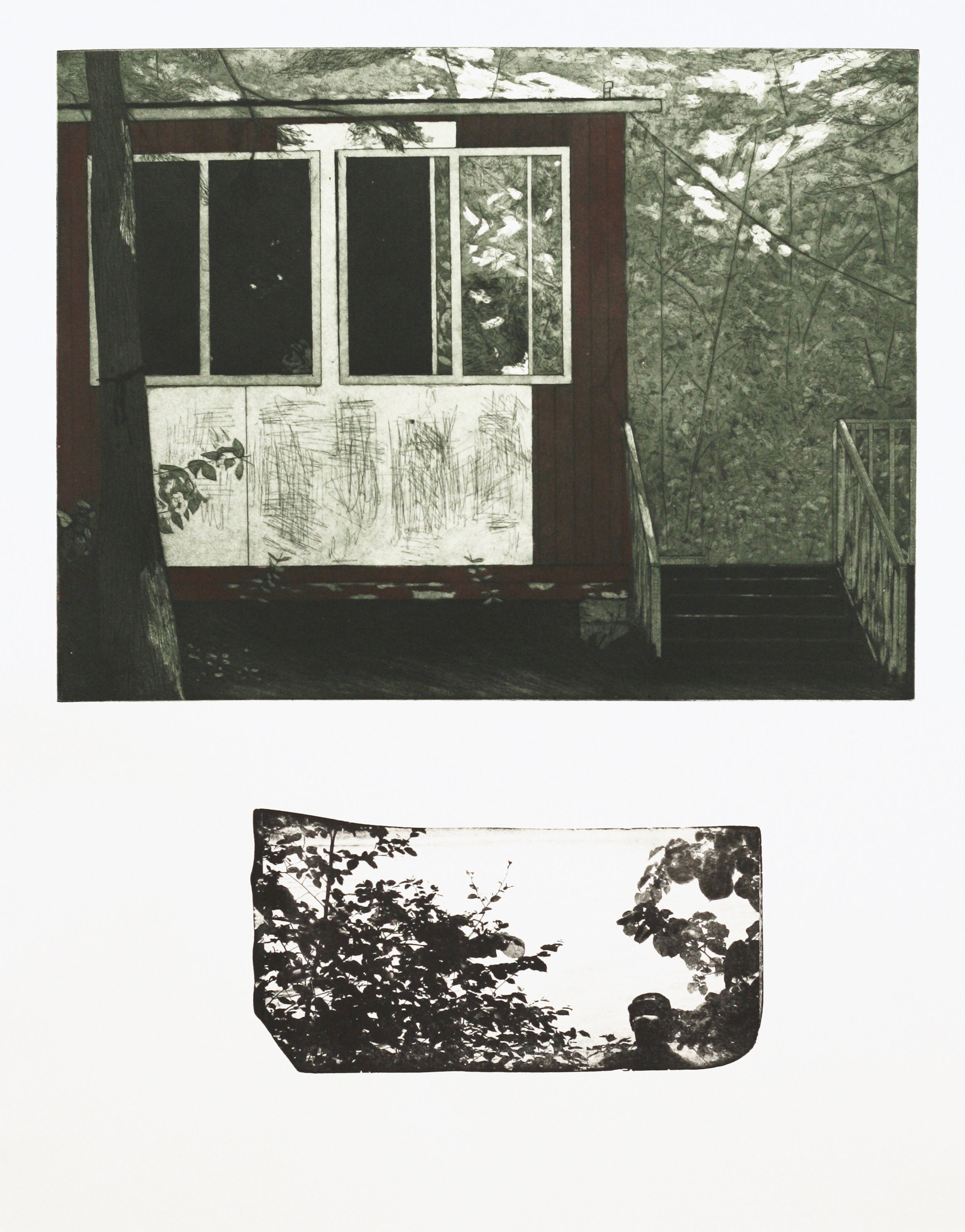H A N D R A I L S
Graduate research completed at the University of Regina
Exhibition Summary:
From ages 9 – 21 Brian Hoad spent his summers at camp, near the small town of Tweed, ON. Like many past camp attendees, he now feels a strong connection to that place and time in his life; cuts, scrapes, bruises, and bug spray. In addition to being a significant part of Hoad’s personal narrative, the experience of attending camp has been a fundamental experience common among so many young people in North America throughout history.
Handrails are recognizable symbols included on maps to assist in navigation. These include fences, roads, key buildings, etc. At camp a glacial erratic served as the most notable one of these on the ecological hiking trail. Glacial erratics, rocks which while formed elsewhere, have moved to new areas through the force of mobile glaciers. In this exhibition, consisting of printmaking, drawing, and painting, the metaphor of handrail and glacial erratic have been explored in a manner connecting experiences with summer camp and wilderness to a critical evaluation of how wilderness institutions carry out ideological agendas. Michel Foucault explains that all societies separate certain spaces as other, or, heterotopias, each of specific function, as opposed to homogeneous, utopia spaces where all aspects of life could co-mingle without consequence(1). Hoad observes the camp as an other space, both an essential form of alternative education, outside of the traditional classroom and simultaneously, a constructed colonial space, intentionally different from surrounding zones as agents of affection with the goal of moulding young minds.
Cooks’ Cabin (The Erratic) (2015), displays an interaction between different printmaking methods on one sheet of paper. An interesting contrast is presented as the organic shape of the lithographic stone contrasts that of the squared copper etching plate. The image is intended to draw attention to the imposition of human made within natural spaces. Stone lithographs are printed from heavy, flat slabs of limestone and were once the primary means of industrial printing. Hoad’s own use of stone lithography here counters the historical practice of hiding the stone’s organic shape. Instead, he typically prints the entirety of the stone, embracing the rounded, uneven edges, commenting on the appropriation of nature by humans, in addition to nature itself as an influence in his practice. In many works, exciting, curious, or stylistically naïve mark making is used, rather than committing to realism. Such skewing and distortion amplifies the notion that the human, “return-to-nature” is a strange.
(1) Michel Foucault. Of Other Spaces.
Cooks’ Cabin (The Erratic)
copper etching w/ watercolour and lithography, 35”x28”, 2015.
Highway 37, North of Belleville
copper etching, 18”X24”, 2016.
Uprootedness
copper etching, 18”X24”, 2017.
WHITE RABBITS WHITE RABBITS WHITE RABBITS
soft pastel on black BFK, 30” x 44”, 2016.
Voyageur
soft pastel on black BFK, 30” x 44”, 2016,
Pathway
charcoal on paper (9 sheets), 58”x76”, 2016.


































